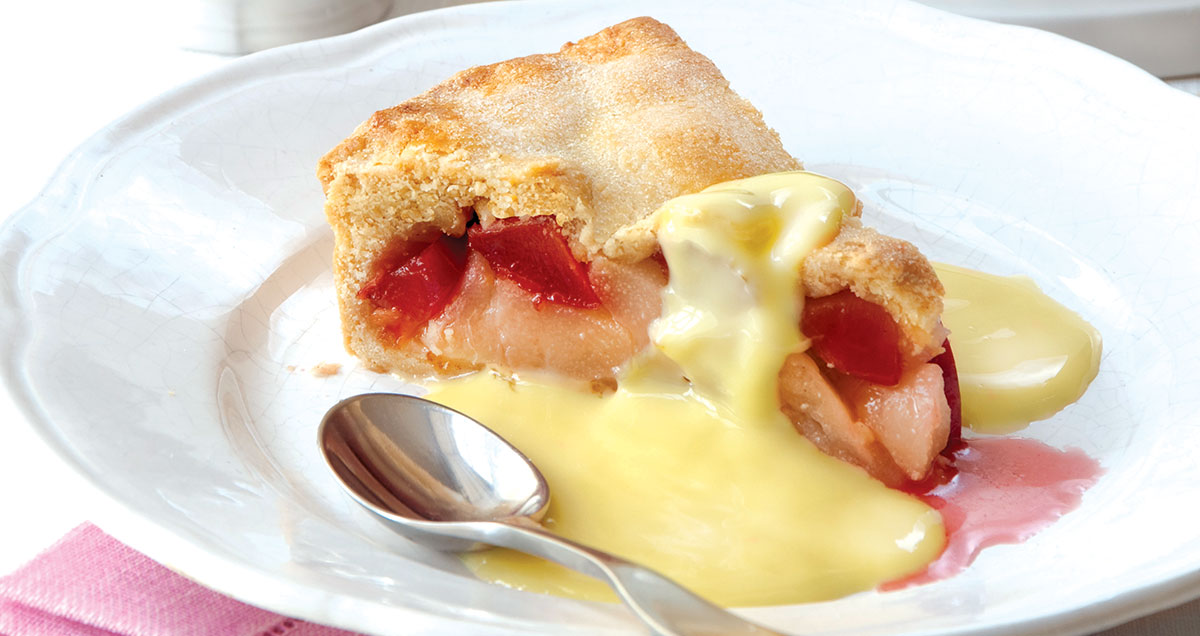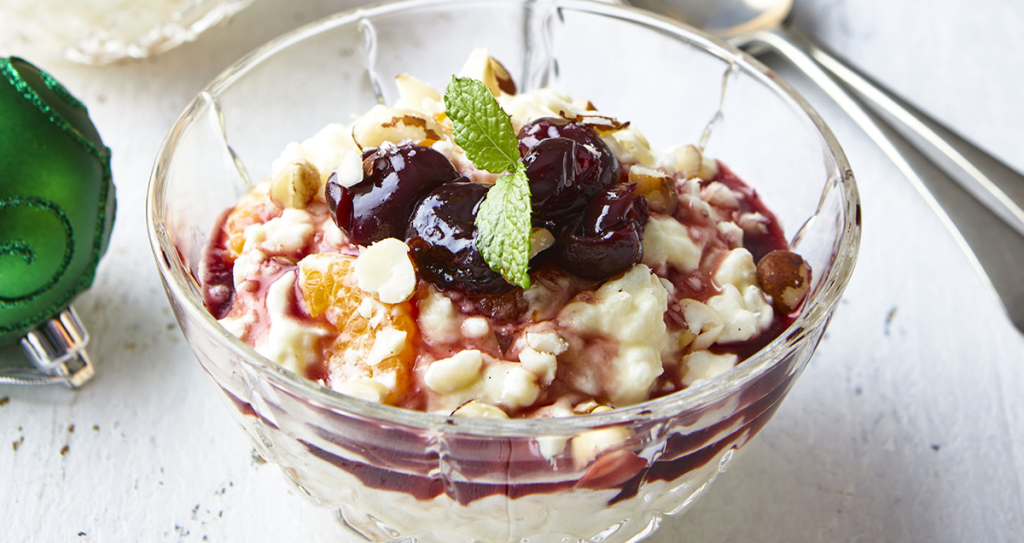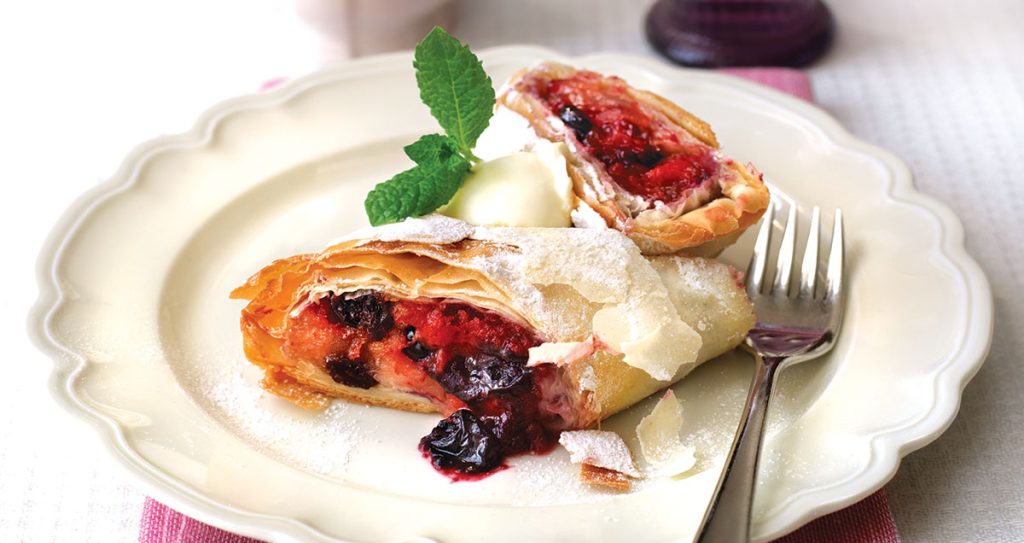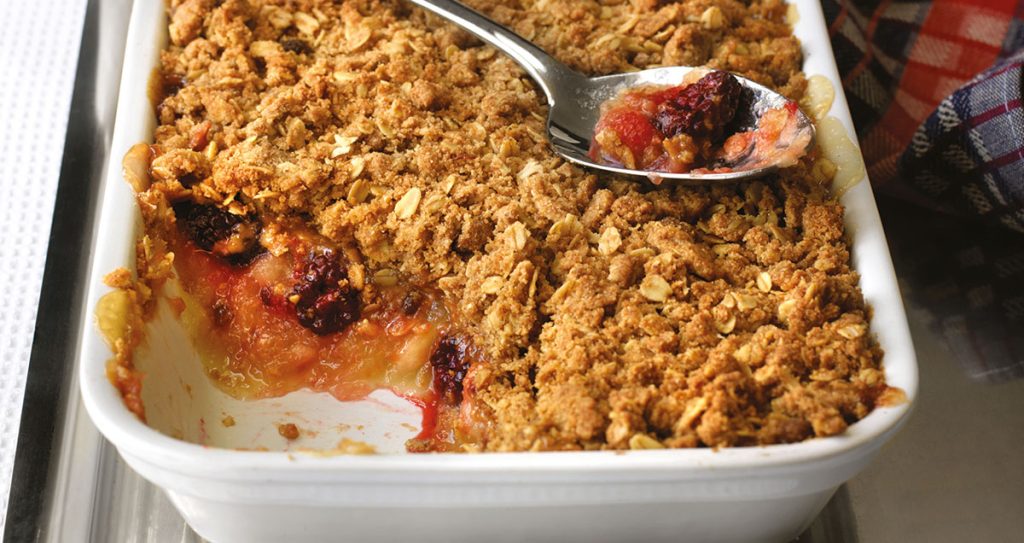, Step by step
Apple and plum pie

A delicious way to use the 'fruits' of your autumn apple picking. You can even substitute your favorite apple of the season!
Method
-
Step 1
Heat the oven to 170°C. To make the pastry, place the sugar into a large bowl and add the butter. Beat together for 30 seconds. In a separate bowl, mix the two types of flour together, and then rub the flours into the butter and sugar mixture using your fingertips to make a light pastry. Use a little water to bring it together if needed. Do not overwork the pastry or it will become heavy. Place into the refrigerator to rest for 1 hour.
-
Step 2
To make the filling, peel, core and cut the apples into large chunks. Then cut the plums into quarters to remove the stone. Put the butter and caster sugar in a medium saucepan and melt together over a medium heat. Stir in the apples and cook for 3 minutes. Add the cut plums and cinnamon and cook for a further 2 minutes. Remove from the heat and leave to cool.
-
Step 3
Roll out 2/3 of the pastry for the base of the pie. Line an 18 centimetre flan ring with the pastry and slightly overlap the sides.
-
Step 4
Place the fruit into the pastry and top with the other 1/3 of pastry. Crimp the edges to seal the pie top. Cut the excess pastry from the edge and egg wash the top and sprinkle with a little caster sugar. Now bake in the oven for 35 minutes or until golden brown on top.
-
Step 5
Serve with custard or Greek yoghurt.
Nutrition
Plums are related to peaches, nectarines, cherries and almonds—which makes sense when you think of the similar lovely blossom these trees all bear in the spring. They are all members of the rose family of plants.
Botanically the fruit is known as a drupe, meaning a hard seed surrounded by fleshy fruit.
There are many different varieties of plums. It is believed that they may have been the earliest fruits to have been cultivated, with some apparently originating in Asia and some in Eastern Europe—notably in the Caucasus Mountains. Today’s plums are descended from two main varieties—the European plum (Prunus domestica) and the Japanese plum (Prunus salicina).
Plums are rich in potassium and fibre and two would count as one of your 5 a day. They are delicious eaten raw, but also when poached and as an ingredient in pies, crumbles and cakes.
DR JULIET GRAY, COMPANY NUTRITIONIST


